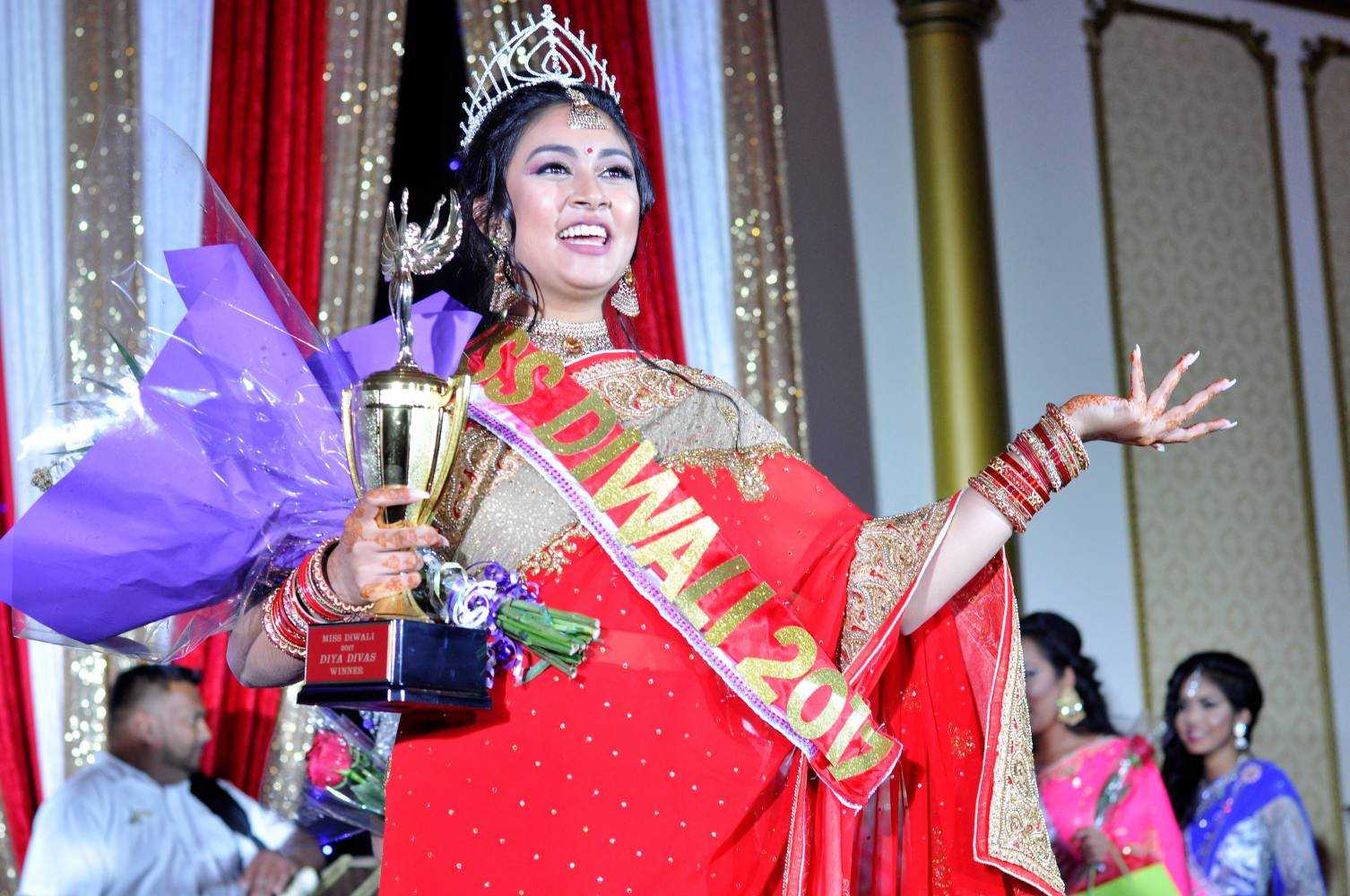BY: LEANNE BENN
Rajmini Ramkumar never imagined that she would help bring the spirit, creativity, and festiveness of Diwali celebrations held by Hindu communities in the West Indies here to Canada. After working along with her daughter Chalisa, after a trip to Trinidad and Tobago, she was inspired to have a Toronto based celebration for a Miss Diwali pageant. Now 2017 marks the third successful anniversary of a growing community showcase, the Miss Diya Divas Pageant.
The pageant was officially hosted on October 15th at the Rose Garden Banquet Hall in Etobicoke. There were over 500 guests that attended the almost five-hour celebration, that was not just about a traditional cultural pageant, but also about community spirit and support.
The pageant serves as a time to get community youths involved in traditional Hindu religious activities and is an effort not just by the organizers but parents and heads of religious temples in the community as well. The pageant is the highlight the Hindu religious celebration of Diwali and serves as a chance for contestants to showcase Hindu culture in the form of exotic traditional wear, music, dance, and overall festive fun to mark an important event in cultural history.
Ramkumar serves as the official pageant director and is proud of the community support that helps to make the pageant bigger every year, including even musical guests from Trinidad and Tobago. Ramkumar is part of a team that trains the prospective pageant girls. The competitors are girls aged 16-20 with a cultural understanding of the Hindu background and will serve as a prominent face for the community temple.
The contestants were judged based on traditional talent, including song and dance, dress, attitude, intelligence and overall composure to carry on the crown and carry out representative duties as the pageant queen.
“The pageant looks very good for our temple, very good for our community and shows that the temples are grooming their kids to get youths involved.”
The 2017 queen is Sarika Sasenarine, 1st runner-up Shalini Maharaj and 2nd runner-up Karishma Deoraj.
Ramkumar personally expressed thanks to Pandit Joe Jaglall,Pandit Ian Jagdeo Maharaj, Pandit Doobay Maharaj, Pandit Jai Tiwari, Pandit Vishnu Prasaud Misra, Pandit Samoooj Maharaj, pandit Harilal Sharma, Pandit Seelal, Pandit Krishna Harpal, Pandit Nandalall Mathura and Mr Bansingh of the Shiva Ganesh Mandir.
One of the most important aspects of the pageant is the community support and presence, including friends the judges and many sponsors who all helped to make the event spectacular. Miss Diya Divas is more than just a show as community vendors are starting to use the event time as a place to share traditional goods and encourage community closeness by setting up booths
In the future, the pageant hopes to continue expanding and to incorporate even more elements similar to Diwali showcases seen in certain places like Trinidad and Guyana. For more information on this pageant and for prospective queens reading this, contact, Rajmini Ramkumar at rajminiram@gmail.com.


John Fredrick
November 1, 2019 at 2:30 pm
The 2017 was the best Diwali peasant and best queen ever crowned.Miss Sarika Sasenarine. Well grounded, talented and very very humble and beautiful! The Diya Diva / Epic Entertainment could not choose a better queen of all the years!!!
2017 was the best!!
John.